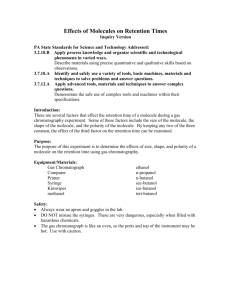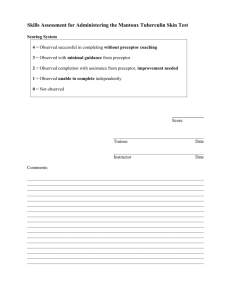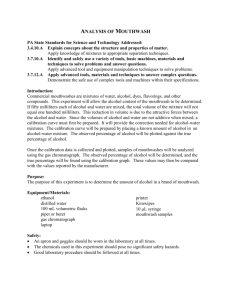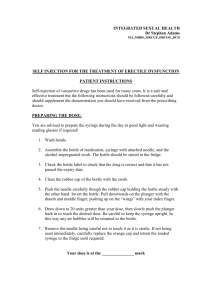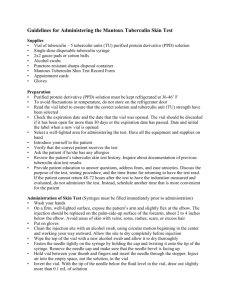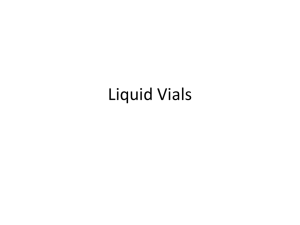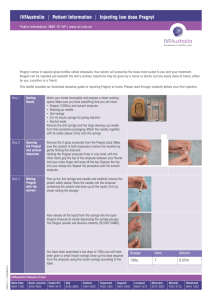BAYER: KOGENATE FS WITH BIOSET (Recombinant FVIII)
advertisement
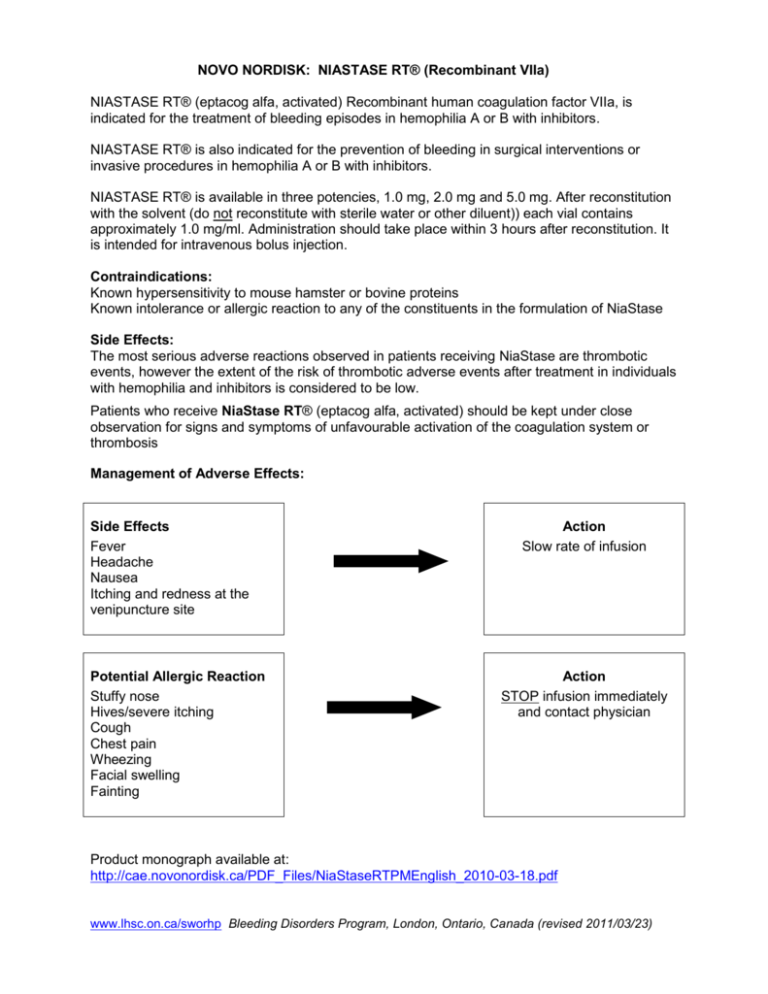
NOVO NORDISK: NIASTASE RT® (Recombinant VIIa) NIASTASE RT® (eptacog alfa, activated) Recombinant human coagulation factor VIIa, is indicated for the treatment of bleeding episodes in hemophilia A or B with inhibitors. NIASTASE RT® is also indicated for the prevention of bleeding in surgical interventions or invasive procedures in hemophilia A or B with inhibitors. NIASTASE RT® is available in three potencies, 1.0 mg, 2.0 mg and 5.0 mg. After reconstitution with the solvent (do not reconstitute with sterile water or other diluent)) each vial contains approximately 1.0 mg/ml. Administration should take place within 3 hours after reconstitution. It is intended for intravenous bolus injection. Contraindications: Known hypersensitivity to mouse hamster or bovine proteins Known intolerance or allergic reaction to any of the constituents in the formulation of NiaStase Side Effects: The most serious adverse reactions observed in patients receiving NiaStase are thrombotic events, however the extent of the risk of thrombotic adverse events after treatment in individuals with hemophilia and inhibitors is considered to be low. Patients who receive NiaStase RT® (eptacog alfa, activated) should be kept under close observation for signs and symptoms of unfavourable activation of the coagulation system or thrombosis Management of Adverse Effects: Side Effects Fever Headache Nausea Itching and redness at the venipuncture site Potential Allergic Reaction Stuffy nose Hives/severe itching Cough Chest pain Wheezing Facial swelling Fainting Action Slow rate of infusion Action STOP infusion immediately and contact physician Product monograph available at: http://cae.novonordisk.ca/PDF_Files/NiaStaseRTPMEnglish_2010-03-18.pdf www.lhsc.on.ca/sworhp Bleeding Disorders Program, London, Ontario, Canada (revised 2011/03/23) NOVO NORDISK: NIASTASE RT® (Recombinant VIIa) STEP 1 NiaStase RT® powder and solvent vials should be at room temperature for reconstitution. Choose a clean, dry, well-lit work area and lay out the following supplies: NiaStase RT® box(s)- check dose & expiry date Sterile plastic Luer Lock syringe large enough to hold single dose (1) Blunt Fill Needle Alcohol swabs STEP 2 Wash hands, under nails and forearms Use warm running water Use antibacterial soap from pump dispenser Dry hands with a paper towel Turn off taps with paper towel & discard STEP 3 Remove the plastic caps from the RVIIa powder and solvent vials. If the caps are loose or missing, do not use the vials. STEP 4 Clean the tops of the bottles with an alcohol swab. Allow to dry completely. DO NOT blow on the tops to speed up drying, this will contaminate them. STEP 5 Open the package containing the sterile luer lock syringe large enough to hold the prescribed dose of rVIIa. DO NOT touch the tip. Attach a blunt fill needle to the syringe. www.lhsc.on.ca/sworhp Bleeding Disorders Program, London, Ontario, Canada (revised 2011/03/23) STEP 6 Pull back on the plunger and draw back the same amount of air as the amount of solvent you will be using (i.e. 2.0 ml of air for 2.0 ml of solvent). Remove the protective cover from the blunt fill needle. DO NOT throw out. Insert the needle into the rubber stopper of the solvent vial. Take care not to touch the end of the needle. Inject the air into the bottle of solvent. STEP 7 With your thumb holding the plunger of the syringe in place, turn the solvent vial upside down with the blunt fill needle in place. Make sure that the needle tip is in the solvent. Pull the plunger to draw the solvent into the syringe. STEP 8 Remove the syringe and needle from the solvent and insert it into the powder vial. Be sure to penetrate the centre of the rubber stopper. Hold the syringe slightly tilted with the vial facing downwards. Push the plunger slowly to inject the solvent into the powder vial. Do not aim the stream of solvent directly at the NiaStase RT powder as this will cause foaming. STEP 9 Recap the blunt fill needle by “scooping” up the lid. Make sure that the needle does not touch any surfaces. STEP 10 Gently mix the product by rolling it in between hands until dissolved. Do not shake the vial as this will cause foaming. Check the solution for visible particles and discolouration. If you notice either, do not use it. STEP 11 Rewipe bottle(s) of factor with alcohol swab and allow to dry completely. Pull the protective cover off of the blunt needle used for the solvent. DO NOT throw out. Pull back on the plunger of the syringe and draw up air equal to the amount of factor solution. (i.e., 2.0 ml of air for 2.0 ml of factor solution). www.lhsc.on.ca/sworhp Bleeding Disorders Program, London, Ontario, Canada (revised 2011/03/23) STEP 12 Insert the blunt fill needle into the bottle of mixed factor solution and inject the air. Hold in the plunger, as it will try to push back out. STEP 13 With the syringe plunger fully pushed in, turn the bottle and syringe upside down and slowly pull back on the plunger to withdraw ALL of the factor solution. STEP 14 When all of the factor solution has been withdrawn into the syringe, recap the blunt fill needle by “scooping” up the lid. Remove the blunt fill needle from the syringe and place in the sharps container. STEP 15 Attach a butterfly needle for peripheral vein infusion. STEP 16 Holding the syringe and the needle pointing up, gently flick the syringe to move any air bubbles to the top and gently push on the plunger to remove the air. DO NOT push any factor solution out of the syringe. NiaStase RT® is intended for intravenous bolus injection only and should not be mixed with infusion solutions or be given in a drip. The rate should be determined by the patient’s comfort level. Dispose of butterfly needle or winged infusion set in sharps container. www.lhsc.on.ca/sworhp Bleeding Disorders Program, London, Ontario, Canada (revised 2011/03/23)

